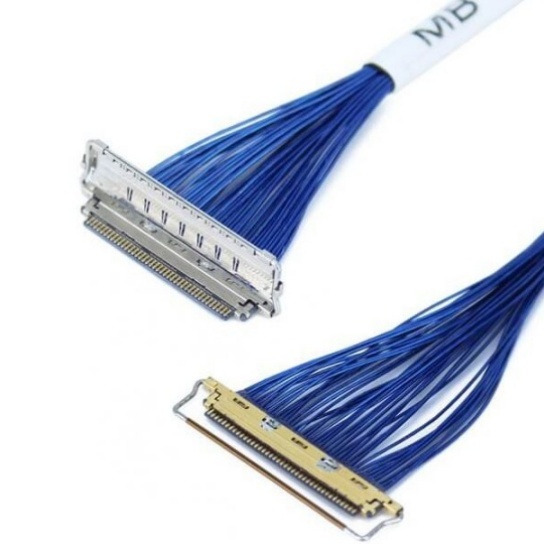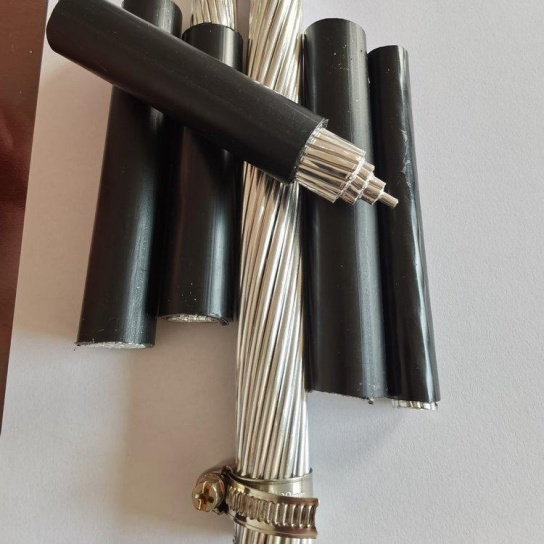lassification of Aviation Cables
Aviation cables are engineered to meet the rigorous demands of aerospace environments, but their diversity can make selection challenging. This article breaks down aviation cable classifications based on materials, construction, certifications, and use cases, helping engineers and technicians optimize aircraft performance and safety.
**1. Classification by Conductor Material
The conductor material determines conductivity, weight, and corrosion resistance:
A. Copper
Types:
Bare Copper (MIL-W-5086): High conductivity for power distribution.
Tinned Copper (MIL-DTL-27500): Corrosion-resistant for humid or salty environments.
Applications: Avionics, lighting, and engine control systems.
B. Aluminum
Types:
Aluminum Alloy (SAE AS4373): Lightweight alternative for non-critical systems.
Applications: Cabin wiring, in-flight entertainment.
C. Composite Conductors
Types:
Copper-Clad Aluminum (CCA): Balances cost and performance.
Carbon Fiber-Reinforced (Airbus AIMS 09-0020): Ultra-lightweight for next-gen aircraft.
Applications: Wing flap actuators, hydraulic systems.
**2. Classification by Insulation Material
Insulation determines temperature resistance, flexibility, and durability:
Material Temperature Range Key Properties Common Standards
PTFE (Teflon) -65°C to +260°C Chemical resistance, non-flammable MIL-DTL-27500, EN 3475-506
ETFE -60°C to +150°C Lightweight, radiation-resistant SAE AS22759
Silicone -90°C to +200°C Extreme flexibility, vibration-resistant SAE AS4373/8
PVC -40°C to +105°C Cost-effective, limited to non-critical zones MIL-W-22759
**3. Classification by Shielding and Structure
Cables are grouped by their shielding and mechanical design:
A. Unshielded Cables
Use: Low-interference environments (e.g., cabin lighting).
Standards: MIL-W-5086/1, SAE AS22759/11.
B. Shielded Cables
Types:
Foil Shielding (MIL-DTL-27500/16): Basic EMI protection for avionics.
Braided Shielding (MIL-DTL-27500/34): Enhanced durability for radar systems.
Composite Shielding (SAE AS22759/41): Combines foil and braid for maximum EMI resistance.
C. Coaxial Cables
Structure: Central conductor surrounded by dielectric insulator and metallic shield.
Applications: GPS, communication antennas (MIL-DTL-17).
D. Twisted Pair Cables
Structure: Paired conductors twisted to reduce crosstalk.
Applications: Fly-by-wire systems, data buses (MIL-DTL-27500/24).
**4. Classification by Certification Standards
Aviation cables must comply with region- and application-specific standards:
A. Military Specifications (MIL-SPEC)
Examples:
MIL-DTL-27500: Teflon-insulated for high-temperature zones.
MIL-DTL-22734: Coaxial cables for radar and communication.
B. SAE Aerospace Standards (AS)
Examples:
SAE AS22759: ETFE-insulated cables for flight controls.
SAE AS4373: Fire-resistant wiring for emergency systems.
C. European Norms (EN)
Examples:
EN 3475-100: Halogen-free cables for Airbus fleets.
EN 6059: Fiber-optic cables for data transmission.
D. OEM Specifications
Examples:
Boeing BMS 13-48: Silicone-jacketed cables for engine bays.
Airbus AIMS 09-0020: Composite conductors for weight savings.
**5. Classification by Temperature Rating
Cables are graded for operational temperature ranges:
Class A (-65°C to +150°C): General-purpose ETFE cables (SAE AS22759).
Class B (-65°C to +200°C): PTFE-insulated cables (MIL-DTL-27500).
Class C (-65°C to +260°C): Engine bay and APU wiring (MIL-DTL-87104).
Class D (-65°C to +400°C): Specialty cables with Nomex or PBI insulation.
**6. Classification by Application
A. Power Distribution
Types: High-voltage cables (115V AC, 28V DC).
Examples: MIL-W-5086 (cockpit power), SAE AS4373 (galley equipment).
B. Signal Transmission
Types: Shielded twisted pair, fiber-optic.
Examples: MIL-DTL-27500/24 (fly-by-wire), AS6070 (Ethernet).
C. Fire-Safety Systems
Types: LSZH (Low Smoke Zero Halogen) cables.
Examples: SAE AS23053/3 (emergency lighting).
D. Extreme Environments
Types: Chemical-resistant, fluid-immersed cables.
Examples: Skydrol-resistant PTFE (MIL-DTL-27500) for hydraulic systems.
**7. Specialized Categories
A. Fiber-Optic Cables
Types: Single-mode, multi-mode.
Applications: In-flight entertainment, flight data recorders (EN 6059).
B. Thermocouple Cables
Types: Type K (MIL-DTL-23369), Type J.
Applications: Engine temperature monitoring.
C. Arc-Fault Resistant Cables
Features: Self-extinguishing insulation, FAA-compliant.
Applications: Wiring near fuel tanks (FAR 25.981).
**8. Future Trends in Aviation Cable Classification
Smart Cables: Embedded sensors for real-time health monitoring (NASA’s Smart Cable Initiative).
Sustainable Materials: Bio-based insulators (e.g., EcoFly) to reduce environmental impact.
Hybrid Designs: Combined power and data transmission in a single jacket.
Aviation Cable Classification Summary Table
Category Key Types Typical Applications
Conductor Material Copper, Aluminum, Composite Power, lightweight systems
Insulation PTFE, ETFE, Silicone High-temp zones, flexible systems
Shielding Unshielded, Foil, Braided Avionics, communication
Certification MIL-SPEC, SAE AS, EN Defense, commercial fleets
Temperature Class A to D Engine bays, cabin systems






